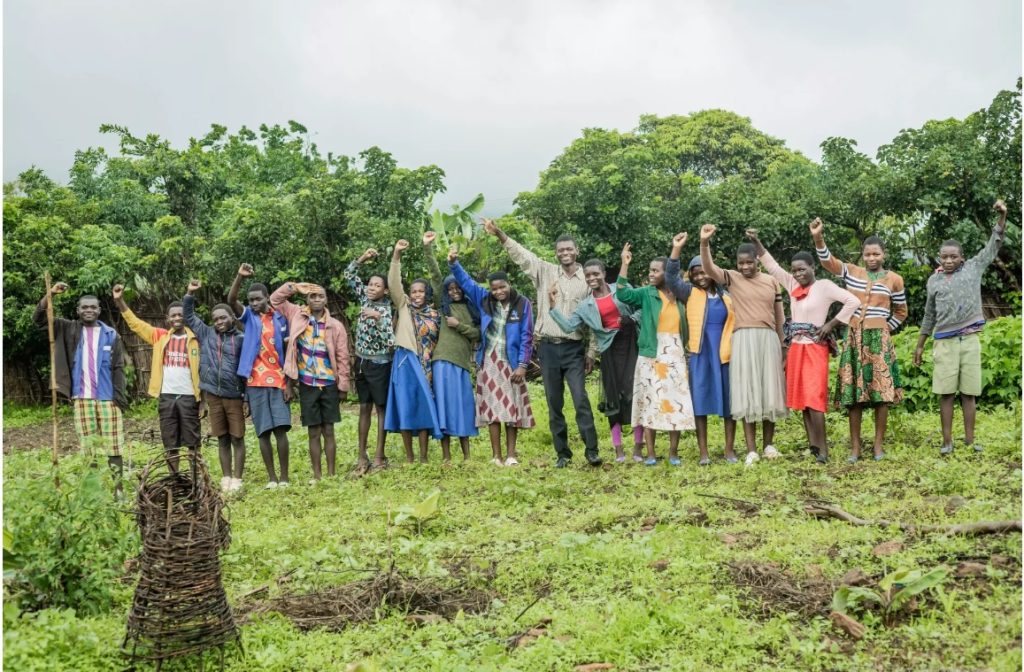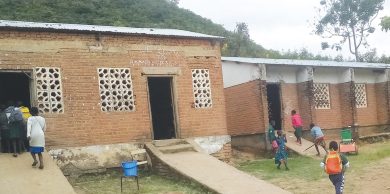What keeps Dedza’shilltop school green?
The hilltop Mtemwende Primary School in Dedza dwarfs a panoramic view of the undulating terrain below, but learners and teachers say the postcard setting is a double-edged sword.
Headteacher Green Mbela laments ravaging winds that recently blew off the roofs of two classrooms and the school’s elevated position which exacerbates water scarcity, compelling learners to trek down to the community borehole.

Despite these adversities, the school has embraced the Living School Yard Transformation Project to arm learners, teachers and surrounding community with knowledge and tools to beat the impacts of climate change.
The project includes the planting of multipurpose trees and school vegetable gardens for improved nutrition.
The school is adorned with shrubs, grass and flowers. Here, the teachers, learners and communities learn nutrition tips, including food preparation, utilisation and processing.

The outcomes are evident at Mtemwende Primary School, where sprawling green lawns, blooming flowers, a flourishing forest and diverse fruit trees beautify the once-barren school yard.
“We’ve two dedicated gardens on the school compound, one for fruits such as bananas and the other for vegetables,” brags Mbela.
The school health and nutrition teachers and pupils were trained in diversified diets.
“To drive the message home, we organised cooking demonstrations, illustrating to learners and community members how to prepare nutritious meals with the resources at their disposal,” Mbela says.
During the demonstrations, the teachers and trainees crafted a delicious one-pot dish and fritters to appeal to children’s taste buds.
Mbela says the dishes included vegetables from the school garden.
He states: “One cannot speak of a healthy diet without mentioning vegetables. That’s the reason we’ve established a dedicated garden with a variety of vegetables.
“The fruit trees, including oranges, bananas, lemons, peaches, and guavas, contribute to the six food groups that are vital to children’s health, growth and success in class.”
Mbela is excited about learners who have embraced this model, taking the fruit seedlings and planting them in their home.
Rural Malawians rarely buy fruits when purchasing foodstuffs, making the home-grown fruits vital for diversified diets.
“Everything we do emphasises the importance of consuming all six food groups,” he adds.
Standard Eight learner Shadreck Gwacha is a member of Mtemwende Primary School Health Club.
He narrates: “Previously, I didn’t truly appreciate the value of fruit trees. However, with this project, I now understand the benefits of caring for fruit trees and maintaining a healthy diet.
“Using this knowledge, I have planted five fruit trees at home. I now share this message with my family and everyone in our community.”
Gwacha’s classmate Tamanda Paskaziyo says her two years in the club have been life-changing.
“I’ve realised that to maintain good health, we must begin by ensuring a healthy diet,” she says.
The Ministry of Education implements the Living Schools project with support from Unicef Germany.
It focuses on conserving the environment in schools and surrounding communities.
This teaches children ways to tackle environmental degradation and climate change while young.
It also enriches children’s learning experiences and enhances their school environment while promoting their health and well-being.—Unicef Malawi





